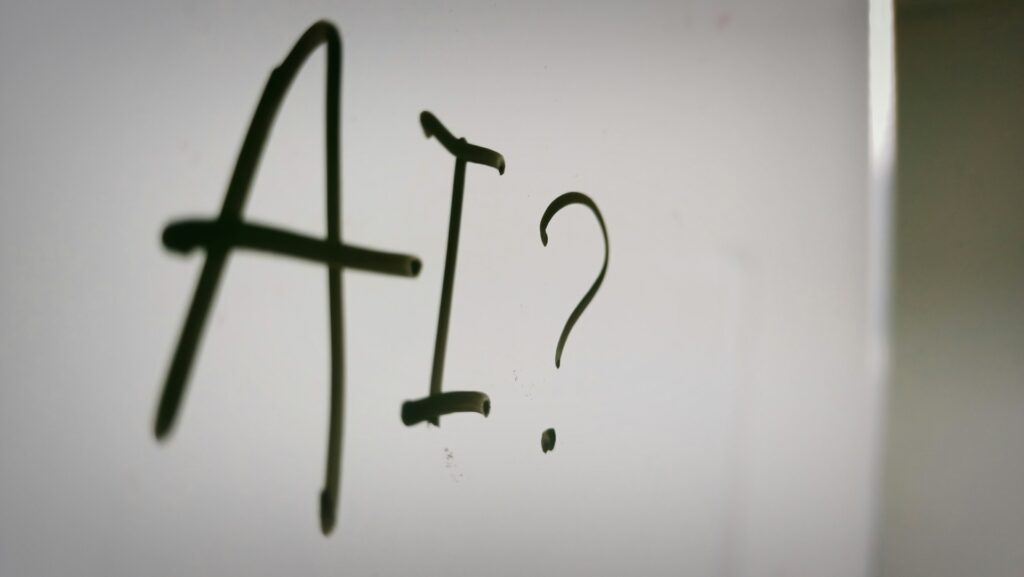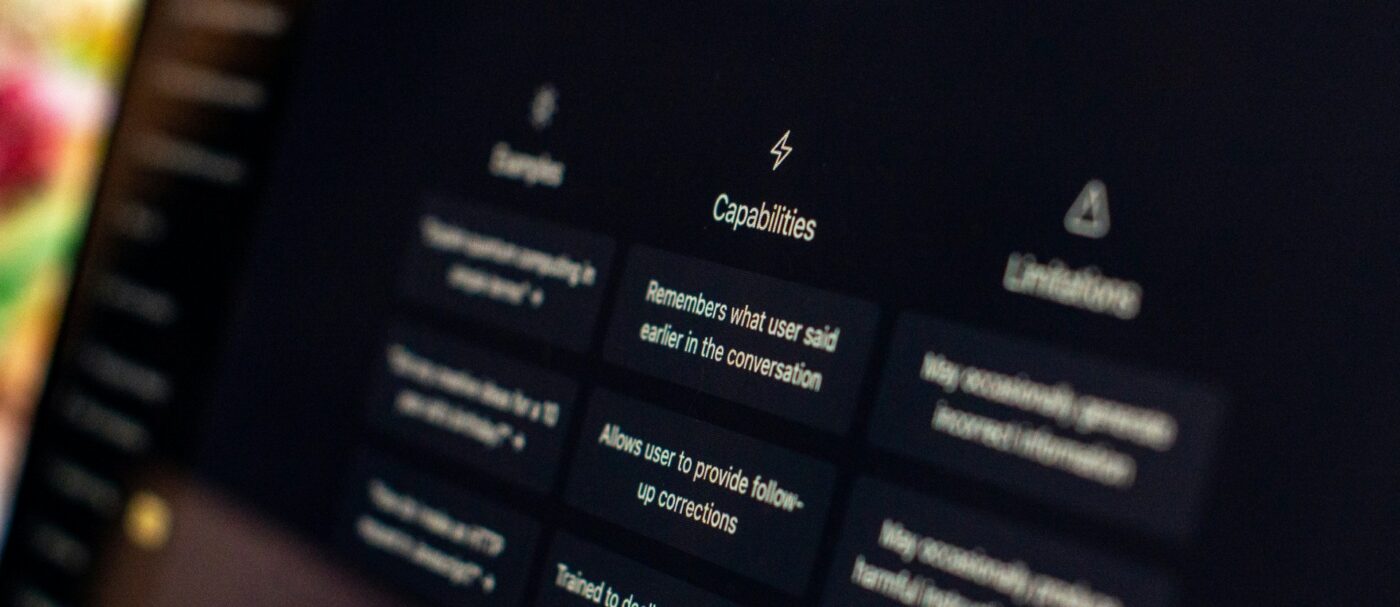By Nicole Gamboni Walter,
SBS Class of 2014
Nicole Gamboni Walter is currently serving as a doctoral fellow at Regent University as she completes her dissertation on crisis communication and cancel culture on TikTok. She holds a B.A. in English with a minor in Leadership Studies from Christopher Newport University (2018) and an M.A. in Journalism from Regent University (2019). Nicole teaches undergraduate communication courses at Regent University, with a focus on organizational, interpersonal and nonverbal communication, among other subjects.
Artificial intelligence (AI) has quickly become a prominent topic among educators, administrators, students and parents, as we all try to determine where it fits into the learning experience. While some are excited about its potential benefits in the classroom, others are wary of its implications. From tutoring opportunities and accessibility features to lesson planning aids and grading assistance, AI offers a range of benefits in educational settings. However, these benefits also pose potential risks, including compromised academic integrity and reduced student engagement.

As someone who graduated from high school before AI was easily accessible, I can’t help but wonder how it might have affected my development as a student. Would I have learned to write as clearly? Would I have leaned on it too much instead of thinking things through on my own? On the other hand, would I have gained a better understanding of difficult subjects? Would I have turned in more thoughtful, thorough work? Reflecting on these questions helps me recognize the importance of balancing both perspectives: Educators must embrace the advantages of AI while ensuring students remain engaged through authentic learning and writing.
The Benefits: What Can We Gain?
AI offers a variety of helpful tools, including improved learning support, enhanced accessibility and inclusivity, administrative efficiency and more. For example, in their 2024 article on artificial intelligence in education, Shan Wang and colleagues explain how Intelligent Tutoring Systems (ITS) simulate human tutoring through personalized algorithms that can provide both feedback and instruction. These tools allow students to ask questions, take practice quizzes and focus on areas where they need additional help.
AI has also significantly improved the writing and editing tools we’ve been using for years. Microsoft Word’s editing suggestions, for example, have been enhanced through AI integration, and now offer more precise and context-aware recommendations than ever before. Platforms like Word, Grammarly and Quillbot help students refine grammar, sentence structure and clarity. In my experience as a student, it often took days to receive feedback on a rough draft—and follow-up questions could take even longer. As an educator myself, it’s difficult to provide that level of detailed feedback to every student on every assignment. Today’s tools can offer detailed feedback instantly, helping students revise and improve their work as they go.
In terms of accessibility, AI tools have also opened the door to new support opportunities for learners with disabilities. Enhanced speech-to-text, text-to-speech and predictive typing features are available to meet a variety of needs, while translation tools can assist in breaking down language barriers. Each of these new developments helps create a more inclusive learning environment tailored to the needs of each student.
Teachers are also benefitting from AI. A 2024 report from Impact Research found that teachers who use AI save an average of 13 hours per week on routine tasks. Rather than spending hours each week on administrative tasks like grading, generating schedules and reviewing formatting, teachers can spend time connecting with students, providing personalized support and focusing on lesson planning.
The Risks: What Can We Lose?
As exciting as these developments are, they come with real concerns. One of the biggest is the temptation for students to rely too heavily on AI. Applications like ChatGPT, Google Gemini and even the Notes app on newer iPhones can generate full-length essays with minimal effort from the student. If students rely solely on these tools, it can inhibit the development of their critical thinking, communication and other crucial life skills. These issues are especially relevant for elementary, middle and high school students who are still developing foundational skills such as handwriting, grammar and independent thought.
At StoneBridge, the emphasis on handwritten work and the notebook method serves as a strong buffer against overreliance on AI. With critical thinking, creativity and communication at the heart of every assignment, these practices reinforce academic integrity and encourage the kind of deep engagement that AI-generated content can’t replicate. The intentional focus on handwriting, for instance, encourages students to slow down, process information more carefully, and retain it better, while filing their work in a notebook teaches organization. When I was a student at StoneBridge, these practices didn’t just improve my writing—they improved my thinking. Those skills have served me well throughout my academic and professional journey.

While AI tools are, by design, intelligent, they can’t replace the value of human interaction, reasoning skills and originality. They’re not always accurate, either—they can include biased or outdated information, and students may not know how to verify what they’re reading. That’s why it’s essential to teach students how to critically evaluate AI-generated content, question what they see and cross-check information using credible sources.
Building a Balanced Approach
Despite the rapid development of AI tools in recent years, a 2024 survey by Impact Research suggests that many schools across the United States are not being proactive in creating AI policies or developing AI training for teachers. This lack of planning leaves room for ambiguity, as students, parents and teachers must develop their own expectations. Educators must not only teach students how AI works, but also how to use it ethically and to understand its limitations.
Schools like StoneBridge are in a strong position to lead by example in this area. Teachers should explain both what AI can do and what it can’t—and why it matters. AI should complement, not replace, the learning process while maintaining the student’s voice and original ideas. For example, it can help brainstorm essay ideas, summarize research, or identify credible sources, but it shouldn’t be used to write final submissions. To reinforce this, teachers might consider assignments that include in-class discussions, oral presentations, hand-written reflections and peer review.
Detecting AI-Generated Content
Even with clear guidelines, detecting AI use isn’t always straightforward. Mike Perkins and colleagues suggest platforms like Turnitin, GPTZero and Copyleaks that determine the likelihood of AI authorship by analyzing sentence structure, verbiage, phrasing and other factors. However, it is essential to understand that these programs are not infallible.

That’s why it’s important to know how to spot AI-generated content, specifically by recognizing patterns such as lack of personal detail, inconsistent tone or phrasing that doesn’t match a student’s typical voice. Researcher Sara Metwalli suggests statistical approaches to AI detection by analyzing perplexity, burstiness, consistency and coherence analysis, stylometry and the N-gram analysis. Each of these methods examines word choice and sequence, repetition and logic.
Conclusion
Like many past innovations, AI is undoubtedly revolutionizing the education experience for students and teachers alike. It offers unique opportunities for collaboration, learning accommodation and efficiency, while simultaneously threatening critical thinking skills and pushing ethical boundaries. By encouraging AI literacy and using these tools strategically, educators can prepare students to incorporate AI ethically and wisely, without letting it take over the learning process.
At a place like StoneBridge, where critical thinking and character formation are at the core of the curriculum, that balance is already being modeled. By grounding students in timeless academic disciplines while thoughtfully introducing emerging technology, we can prepare them for the future without sacrificing authentic learning.
References
Impact Research. (2024). AI chatbots in schools: Findings from a poll of K-12 teachers, students, parents, and college undergraduates.
Metwalli, S. A. (2023, May 26). How do we know if a text is AI-generated? Towards Data Science.
Perkins, M., Roe, J., Vu, B. H., Postma, D., Hickerson, D., McGaughran, J., & Khuat, H. Q. (2024). Simple techniques to bypass GenAI text detectors: Implications for inclusive education. International Journal of Education Technology in Higher Education, 21(53).
Wang, S., Wang, F., Zhu, Z., Wang, J., Tran, T., & Du, Z. (2024). Artificial intelligence in education: A systematic literature review. Expert Systems with Applications, 252(A).







